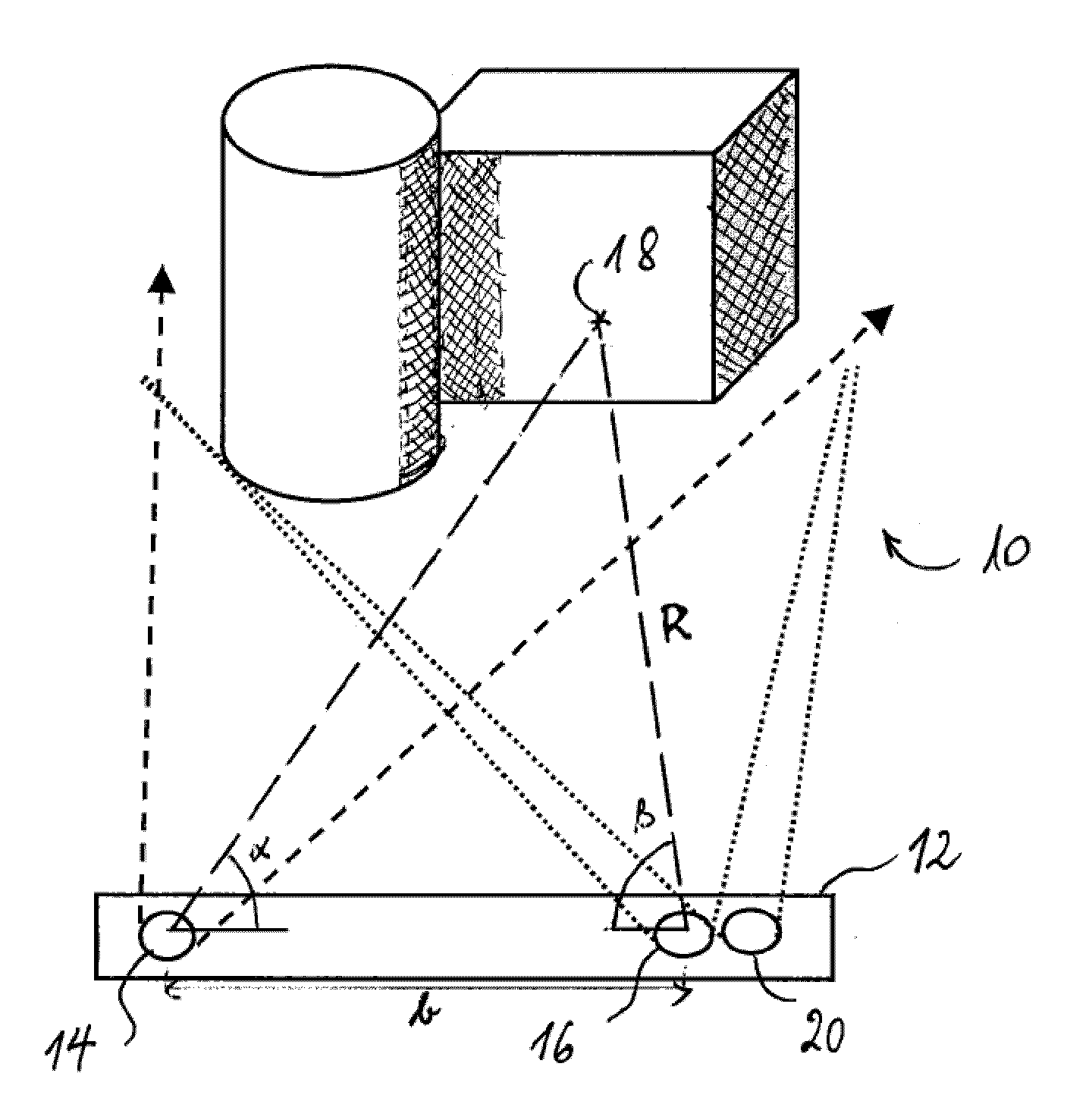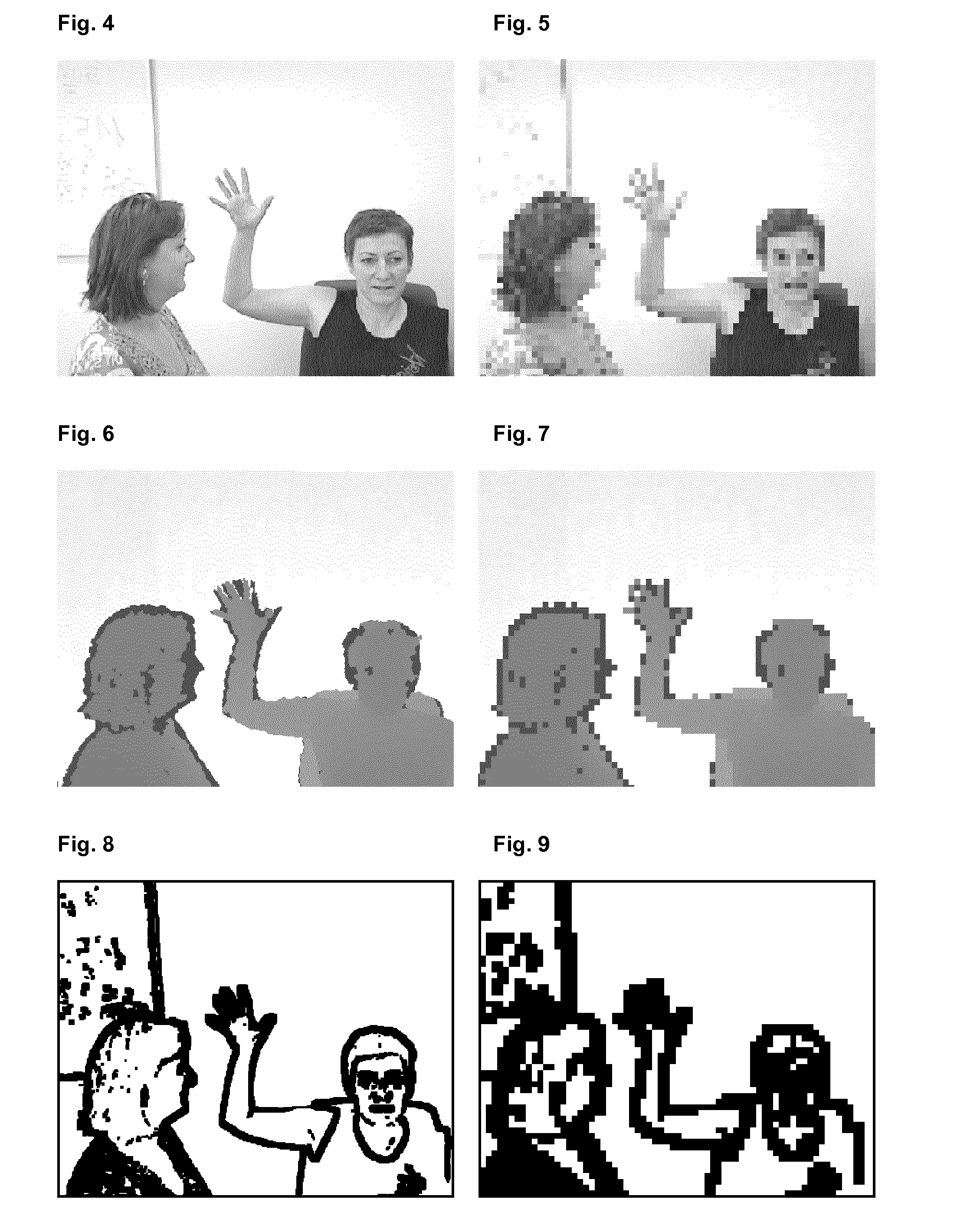Depth image enhancement method
a depth image and enhancement technology, applied in image enhancement, image analysis, instruments, etc., can solve problems such as problems such as stereovision images and structured light, and achieve the effect of increasing the homogeneity of intensity
- Summary
- Abstract
- Description
- Claims
- Application Information
AI Technical Summary
Benefits of technology
Problems solved by technology
Method used
Image
Examples
1st embodiment
1st Embodiment
[0050]According to a first preferred embodiment of the invention, a first filtered depth image {J′2(p)}p is calculated by applying a first filter to the depth image, expressible as follows:
J2′(p)=∑q∈N(p)fS(p,q)fI(I(p),I(q))W(q)R(q)∑q∈N(p)fS(p,q)fI(I(p),I(q))W(q).(Eq.7)
This first filter is a cross bilateral filter that averages over pixels in the depth image {R(p)}p while weighting contributions of the pixels over which is averaged by similarity of corresponding pixels in the intensity image {I(p)}p. In the above equation, fS(.,.) is a spatial weighting term that applies to the pixel position p, and fI(.,.) is a range weighting term that applies to the pixel value I(p). The weighting functions fS(.,.) and fI(.,.) are Gaussian functions with standard deviations σS and σI, respectively. The weighting map {W(p)}p is defined by:
W(p)=V(p)·QR(p), (Eq. 8)
where V is the occlusion map and
QR(p)=exp(-(∇R(p))22σQ2)(Eq.9)
defines the so-called “credibility map” Q. ∇R(p) represents t...
2nd embodiment
2nd Embodiment
[0060]According to a second preferred embodiment of the invention, the enhanced depth image (noted {J″4(p)}p) is calculated by:
J″4(p)=(1−B(p))·J′2(p)+B(p)·R(p), (Eq. 16)
where the above definition of J′2(p) still holds (Eq. 7) and where the blending map B may be defined as in any one of equations 12, 13 and 15.
[0061]The calculation of the enhanced range image by equation 16 differs from the calculation according to equation 11 only in that the depth map R replaces the second filtered range image J′3. Eq. 11 may be preferred over eq. 16 if the depth image R is noisy. In the noise level of the depth image is low, one should prefer calculation based on eq. 16, which is less computationally costly.
[0062]For real-time application, computation of the first (and possibly the second) filtered depth image and of the blending map in full resolution may be unsuitable. (However, this depends on the available hardware.) One may use downsampled versions of the depth image and of the...
PUM
 Login to View More
Login to View More Abstract
Description
Claims
Application Information
 Login to View More
Login to View More - R&D
- Intellectual Property
- Life Sciences
- Materials
- Tech Scout
- Unparalleled Data Quality
- Higher Quality Content
- 60% Fewer Hallucinations
Browse by: Latest US Patents, China's latest patents, Technical Efficacy Thesaurus, Application Domain, Technology Topic, Popular Technical Reports.
© 2025 PatSnap. All rights reserved.Legal|Privacy policy|Modern Slavery Act Transparency Statement|Sitemap|About US| Contact US: help@patsnap.com



